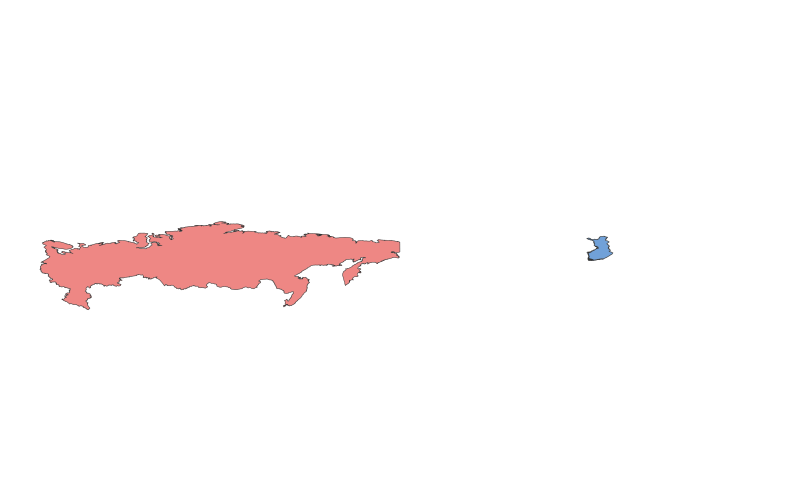Russia vs. Finland: A Geographical Comparison

Comparison Table
| Category | Russia | Finland |
|---|---|---|
| Location | Northern Eurasia, spanning Europe and Asia | Northern Europe, bordering Scandinavia |
| Size | 17.1 million km² (largest country) | 338,455 km² |
| Climate | Diverse: Arctic, subarctic, temperate | Cold temperate, subarctic in the north |
| Natural Resources | Abundant: oil, gas, timber, minerals | Timber, water, some minerals |
| Urban Development | Moscow, St. Petersburg as major hubs | Helsinki, Espoo, Tampere as key cities |
| Transportation | Extensive rail, road networks; Trans-Siberian Railway | Efficient rail, road, and ferry systems |
Description
Russia
Russia, the world's largest country, spans two continents (Europe and Asia) and boasts diverse landscapes, from tundras to forests. Its history is marked by imperial expansion, Soviet rule, and modern federalism. Culturally, Russia is renowned for its literature (e.g., Tolstoy), ballet, and Orthodox Christianity. Economically, it relies heavily on energy exports (oil, gas). Major cities like Moscow and St. Petersburg are hubs of politics, culture, and industry.
Finland
Finland, a Nordic nation, is known for its vast forests, lakes, and high quality of life. Historically, it was part of Sweden and later a Russian grand duchy before gaining independence in 1917. Finnish culture emphasizes education, design (e.g., Marimekko), and sauna traditions. The economy is advanced, with strengths in technology (Nokia), forestry, and renewable energy. Helsinki, the capital, blends modernity with nature, and the country excels in sustainable urban planning.
Both nations share a border and cold climates but differ vastly in scale, resources, and geopolitical roles.